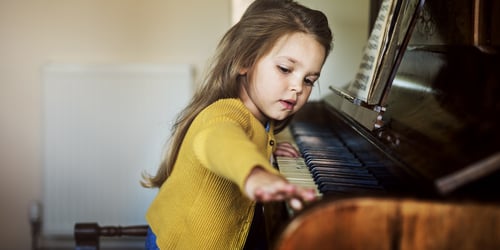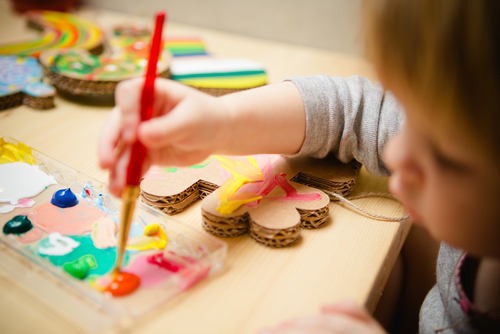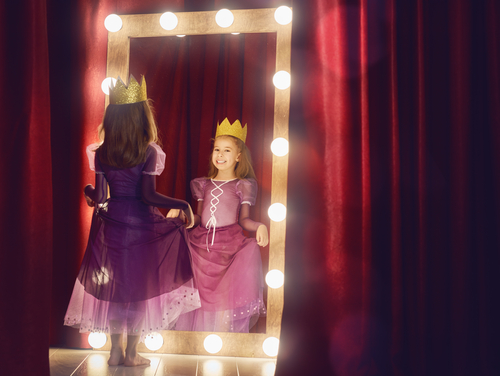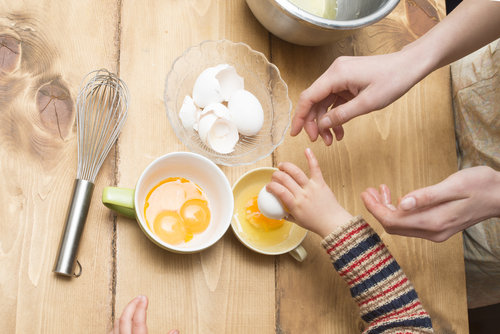By: Esther Pransky, Lubicom Marketing Staff
Do you remember the first time you baked a cake or made challah? The final product was so much more than the sum of its parts.
All creative ventures are like that.
A finished painting takes on a life of its own way beyond separate dabs of paint.
A song uplifts us far above any single note.
No wonder we want our kids to grow and gain confidence from the creative process.
Creativity comes in all types, so here’s an array of ideas to inspire all ages, stages, and interests.
(And don’t forget that Chanukah is coming. A lot of these ideas make awesome Chanukah gifts!)
Creativity Through Movement (Ages 2 – 4)

Very young children may not be able to draw, write, or sing, but they can express themselves through movement.
And with their active imaginations and natural curiosity, they love to imitate and pretend. You can encourage creative expression with kids’ music cd’s like Morah Music and Mendy Music.
Or doing it yourself couldn’t be easier. Turn on any music and ask your kids to dance like an elephant. Or a mouse. Or a frog.
The game ends when you’re all laughing on the floor together.
Artistic Creativity (Ages 2 to adult)

You could buy expensive art supplies, but unless your child is working at a very high level, it’s not necessary. With just crayons and scrap paper, kids gain confidence in their artistic skills and explore colors, perspective, and shapes.
Here are some creative ideas for different ages:
(Ages 2 – 4) Dreidel Art -Dip a dreidel in (washable!) paint and spin it on paper. To be super fancy, cut the paper into the shape of a large dreidel.
(Ages 3 – 6) Art Dice – You can make these yourself with three wooden blocks. On one block, put color dots. On another block, draw different types of lines (straight, squiggly, zig zag). Draw shapes on the sides of the third block. Kids spin the dice and draw based on what they rolled.
(Ages 6 – 10) Pass the Picture – This is a great game for doctors’ waiting rooms or restaurants with long waits. One child starts a drawing, then passes it on. Each person adds another part to the picture.
Performing (Ages 4 – 10)

Being a drama queen isn’t all bad.
You might even want to encourage your kids to see the world as their stage. (When it’s not bedtime, of course.)
Performing helps develop acting skills, imagination, storytelling, and expressiveness. And there’s a huge confidence boost in facing and overcoming stage fright.
To inspire your young actors, try this doorway puppet theater. While most puppet theaters are another piece of furniture in an already crowded playroom, this one rolls up when not in use.
If you’d rather DIY, start a dress-up collection with old clothes, hats, ties, shoes, and wigs for the kids to use to perform.
Singing (Ages 6 – 10)

Some children are born singing, but you can work to bring out even reluctant singers. Through song, kids learn to concentrate, show expression, and explore new sounds. Plus, singing is an automatic mood-lifter.
Singing can help set the mood, too. For young children, you can cue them into the moment at hand with:
- a clean-up song
- a bath song
- singing Shema at bedtime
Older kids can pretend to be professional singers with karaoke machines. They come in a range from expensive, top of the line to simple and cheap models.
Or forget the machines and DIY. Using your own music player of choice, play the first 5 or 10 seconds or a song. See who can correctly guess the song first.
Creativity With Words (ages 8 and up)
Word games encourage word building, quick thinking, and creative solutions. And they’re loads of fun, too.
You probably know the classic games like Boggle, Scrabble or Bananagrams.
But what about some newer ones? Both these games have everyone playing at the same time, so they’re perfect for groups:
- Stinker – Players arrange their letter tiles to answer questions. The best part of this game? You don’t have to spell correctly, just creatively.
- Anomia – No writing or spelling needed. Players race each other to think up words in a category.
But you don’t need games to build writing skills. DIY by encouraging your kids to write emails or letters to grandparents, aunts uncles. Younger kids can draw pictures or dictate.
Not only is it free, but it builds relationships, too.
Imagine. With all that training, one day, your child could become a Kosher.com blogger, too.
Cooking, Of Course! (Ages 3 to adult)

If you’ve spent any time on kosher.com, you know that cooking can inspire creativity in so many ways.
Kids love experimenting with tastes, textures, and food techniques. There’s a thrill in the process of creating something edible out of raw ingredients.
Little children are happy to help in the kitchen with anything from pouring ingredients to washing the veggies. For a fun activity, decorate cake or cookies together. Put out icing, sprinkles, and other toppings and let the kids go! Add a theme for some extra pizzazz.
Older children can have a home cook-off show. Here’s how it works:
1. Divide into two or more teams, plus a judge.
2. The judge chooses three ingredients that each team must use.
3. The teams have 45 minutes to cook and plate their food.
4. Teams are “judged” on taste, creativity, appearance, etc.
You can involve younger kids as judges or pair them on a team with older children.
And don’t forget about watching Nosh & Nibble, Kosher.com’s new kids’ cooking show, to inspire your children’s culinary creativity!
We hope those ideas got your creative juices flowing, too. After all, your inspiration will inspire your children.
So, turn on the music or get out the crayons.
Ready, set, go!





